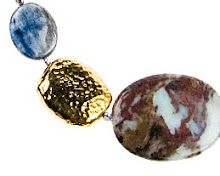
Derived from the Greek word krystallos, which has been translated as 'clear ice,' crystal refers to some of the most impressive and bizarre mineral outgrowths found in nature. Seeking to emulate these wonderfully strange and beautiful forms, man has successfully produced glass crystal since George Ravenscroft established his innovative glasshouse in London, England, in 1673. Mixing lead oxide with molten glass during the heating process, Ravenscroft was able to create a glass of unprecedented sparkle and consistency.

The more lead oxide that is added to the glass, the more refractive and visually stunning the finished product will be. However, this comes at the cost of dramatically increased rigidity, and the crystal therefore becomes much harder to blow. At this stage, crystal is usually manufactured by an incredibly skilled and coordinated team of glass blowers- from 4 to 7 people working in synchronized fashion- and takes a tremendous amount of physical strength, breath control and stamina.
After the initial shaping of the crystal object or bead, it is soaked in an acidic bath that effectively removes any imperfections from the exterior. The crystal then enters the cutting phase. Because the crystal is so amazingly hard, diamond-tipped wheels are required to cut flat facets into the surface. For shallow engraving and/or imagery, small, slow-moving copper wheels are used in a procedure that can take hours to perfect the crystal bead or object surface.

No two crystals are identical, and through a long, multi-stage process, the final product is accomplished by an experienced and creative team whose craft is still being refined after centuries of development.

Click here to browse Crystals at Stones and Findings

No comments:
Post a Comment